A Star is Born’s momentum has not stopped. Since its premiere at this year’s Venice Film Festival, the movie and its accompanying soundtrack album have taken the charts, box office, and meme accounts by storm, and, with awards season heating up, it’s unlikely the hype surrounding Bradley Cooper’s emotionally intoxicating directorial debut will die down any time soon.
With that in mind, we’ve decided to tackle this year’s most pressing cinematic question: what is the best musical moment in A Star is Born? A note before we begin, though: because A Star is Born draws equal potency from its music as it does its visual components, this list is a holistic ranking that takes into account not just the musical merit of each individual song, but also how compelling the cinematic scenes they’re linked to are. From Ally’s (Lady Gaga) best musical impressions to Jackson Maine’s (Cooper) tender piano serenades, read on for the definitive ranking of every musical moment in the film – including those not on the soundtrack. As expected, spoilers follow.
17. Too Far Gone
Keen listeners of the soundtrack album will recognize the instrumental in this scene (around A Star is Born’s midpoint) from “Too Far Gone”, the most ominously titled of Jackson’s solo songs. There’s none of that sense of foreboding here, though, as a loved-up (and drunk) Ally and Jackson share a pair of headphones and ad-lib over the music during a recording studio session. It’s all very romantic, but what makes this scene so weak is its weird placement: it comes right after Jackson’s disappointed reaction to Ally’s SNL performance, and there’s no sign of that tension – so crucial in the movie’s second half – anywhere in this scene. Mystifyingly, it seems to have just evaporated, only to crop up again minutes later during the argument in the bathtub.
The fact that Jackson is openly drinking around Ally in the studio feels odd, too, given the great pains the movie takes to establish her no-nonsense attitude towards his drinking in scenes before and after this. Heart-warming though their nose-kissing might be, this is a moment that should have been saved for the DVD extras.
16. Maybe It’s Time
Jackson performs this song – a favorite from the trailer – by special request for one of the drag queens (Willam Belli) as the bar is closing for the night. You get the sense there’s supposed to be a stripped-down charm to the image of a global rock star performing at his most vulnerable on a cramped, dingy stage, with only an “arts ‘n’ crafts” guitar for stage company. Indeed, shots of a captivated Ally watching from behind the curtain indicate this is meant to be Jackson’s “La Vie en Rose” moment, but Cooper just doesn’t have the stage presence here to match the spellbinding magic of Ally’s Edith Piaf tribute. Given that “Maybe It’s Time” comes so soon after that powerhouse performance, it’s hard not to compare the two in the technical stakes, and here, the scene falls short, too. Without the backing of a proper band to camouflage the flaws in Cooper’s vocals – unpolished here even by rockstar standards – they are starkly apparent. To be sure, it’s a solid song on the album, but one that feels much better served by the smoother rendering on the trailer than this lackluster scene.
15. Why Did You Do That?
This musical moment doesn’t rank so low because of Gaga’s performance (note-perfect), or the song (which is – irrespective of what pop snobs say – a sincere banger that perfectly encapsulates the emotional frustrations brought on by the catching of feelings). Instead, I’m putting it here because it symbolizes one of the biggest issues with A Star is Born: its condescension towards Ally and her artistry.
Ally’s SNL performance ought to have been a high point of her still-blossoming career, but A Star is Born looks down its nose at that professional milestone; like Jackson, the movie is keen to stress the view that “Why Did You Do That?” marks Ally’s sell-out moment as an artist. The camera is complicit in this effort, seeming almost to sneer at the highly choreographed nature of the performance and isolate Ally in the frame as if to point out the lonely artifice of what she’s doing. For his part, Jackson looks physically pained – even embarrassed – by the strobe lighting, sparkly outfits, and body-popping backup dancers, too, turning away to find comfort at the bottom of a bottle and leaving Ally to drone on at a safe distance in the background. Revealingly, the cameras follow suit, retreating to the side-stage to capture Jackson’s awkward reunion with brother-manager Bobby (an intensely gravelly Sam Elliott), who casts his own uncomfortable glance in Ally’s direction. That both Jackson and the movie reduce such a watershed moment in Ally’s career to a mere background hum speaks to the fact that, during moments like this, Cooper’s film feels far less interested in the star that’s being born than the one that’s falling.
14. Pretty Woman
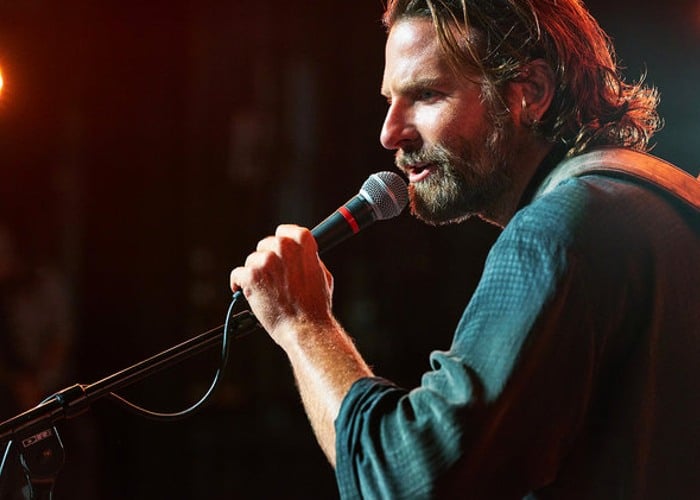
When Jackson gets bumped for a younger singer in the Grammys’ super-group Roy Orbison tribute segment, he seems to take the disappointment good-naturedly, telling Bobby that it’s no big deal. Just as in so many of the movie’s memorable moments, however – the SNL scene, the incident with the cream cake, and, of course, Ally’s impending awards debacle – Jackson reveals himself to be utterly incapable of coping with jealousy, and we soon see him reach for a glass and some pills just as his tinnitus rears its ugly head again.
Musically speaking, this scene isn’t bad – despite Jackson’s balance and timing issues, Brandi Carlile and Marlon Williams’ pristine live vocals save the day – but it’s really just a perfunctory lead-up to the most excruciating moment of the night.
13. Music to My Eyes
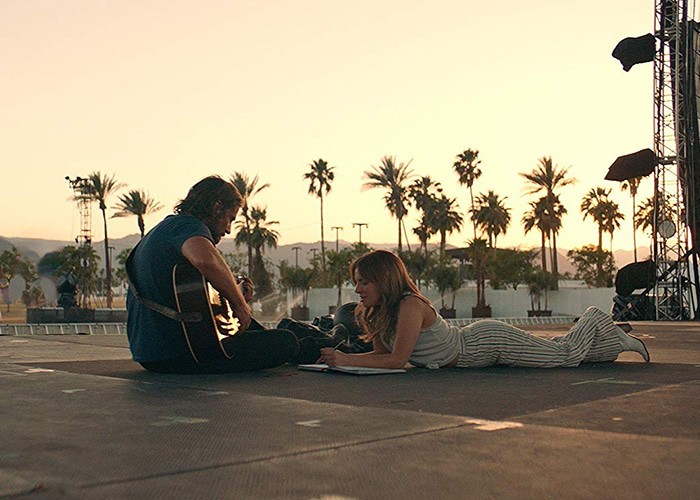
On the soundtrack, this is another duet song, but Cooper provides the sole vocals on this pleasant-enough non-diegetic number in the movie. He begins his crooning the morning after Ally and Jackson spend their first night together in a hotel – during which they pick at an impossible number of breakfast dishes – and continues while Ally returns home to gush with her father and receive an unexpected visit from Jackson, finishing up when the two ride his chopper across state lines into Arizona.
This is the first major non-diegetic musical moment in the film, and as such, it feels a little lifeless. With no visuals of live singing to keep us engaged with the music, the most memorable parts of this musical moment end up being a) Ally’s sudden emotional about-turn – moments after confessing her deep feelings to Jack, she tells him to “Go wait downstairs” with all the sternness of a particularly short-tempered schoolteacher – and b) those three hundred plates of breakfast food.
12. Heal Me
This scene – Ally’s first performance under the stewardship of her thoroughly unpleasant new manager Rez (Rafi Gavron) – shares traces of the condescension of the later SNL scene, although its disdain for Ally’s pivot to outright pop is less apparent here (perhaps because Jackson, the movie’s moral guide, is absent). As performances go, it’s actually rougher around the edges than “Why Did You Do That?”, but that’s only to be expected of an as-yet unseasoned artist finding her feet as a solo performer, and anyway, the presence of a clearly enthusiastic, receptive crowd helps smooth over any imperfections in the choreography.
11. Somewhere Over the Rainbow
Appropriately, Cooper chose this Wizard of Oz classic to introduce us to the wonder that is Ally’s voice; while Judy Garland didn’t originate A Star is Born’s female lead (that honor goes to Janet Gaynor of the 1937 film), she was the first to step into Gaynor’s shoes, making her a central figure in the movie’s regenerative legend. Gaga channels Garland in this scene, twirling her way down a dark and damp alleyway as Ally makes her way home from work, the movie’s titles appearing in ceiling-to-floor red letters just as she belts out: “Heaven opens a magic lane/ When all the clouds darken up the sky way/ There’s a rainbow highway to be found” – auspicious or what?
10. I Don’t Know What Love Is
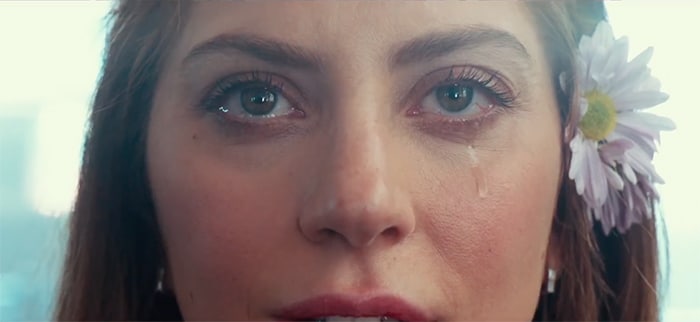
This non-diegetic duet kicks in just as Ally and Jackson decide to take the nuptially-inclined advice of Dave Chappelle’s character – who is, apparently, named George ‘Noodles’ Stone, although I’m fairly sure the word ‘Noodles’ does not make an appearance in this movie. Appropriately, the lyrics and melody are very romantic, Gaga’s voice soaring through the impromptu wedding scene and miraculously well-attended reception as gentle piano music floats underneath. This scene is the heart-eyes emoji translated into musical notation, and while it’s all very lovely, it’s underserved by the fact there’s no tenderly wrought live performance to accompany it.
9. Is That Alright?
From the sounds of this song, it was originally recorded as part of a live performance; perhaps during the secret concert attended by Little Monsters at LA’s Greek Theater that A Star is Born’s producer Bill Gerber described to Billboard. We can only guess because, since it plays during the credits, there are no visuals to accompany this song – except, maybe, the imprint burned onto your retina of that solitary tear rolling down Ally’s face in the movie’s final, heart-rending shot. Lyrically, it’s informed by the bitter nostalgia of Ally’s grief, and feels almost like her response to “I’ll Never Love Again”, the chorus of which Jackson wrote for her. Far from helping us heal from the emotional wounds of A Star is Born’s tear-jerking ending, then, “Is That Alright?” only intensifies its reeling impact, serving up another helping of the pain audiences willingly sign themselves up for in a movie like this.
8. Out of Time and Alibi
The atmospheric drums to Jackson’s instrumental song “Out of Time” startup around the movie’s half-hour point, right after Ally’s boss (Jacob Schick) pushes her buttons for the last time, triggering her decision to take Jackson up on that invitation to join him at that evening’s concert. “Out of Time” is exactly the kind of crescendo-building song an artist would play to stir up a live crowd, and it works on the movie’s audience in the same way, kindling our excitement for the pair’s impending reunion.
Blessedly, things move quickly, and it’s not long before Ally and Ramon (Anthony Ramos) are being jetted out to Jackson’s show. After a very impressive guitar solo from Jackson, the music melts into the grungier “Alibi”, the two make eye contact, and the knowledge that Ally is watching seems to galvanize Jackson, who shreds his guitar strings to within an inch of their life – much to the head-banging delight of Ally. This whole scene feels immersive, evoking what (admittedly, I can only imagine) it would feel like to stand side-stage at a country-rock concert – precisely the movie’s intended effect, according to its music editor Jason Ruder.
7. Shallow (Parking Lot)
In the parking lot of a Super A Foods, we’re privy to the conception of the most luminous of all A Star is Born’s stars: “Shallow”. The song’s intensely personal genesis is documented as such: prompted by a revealing heart-to-heart with Jackson and inspired by his tragic history and present solitude, Ally looks up to the heavens and conjures up a few lines (later to become the song’s second verse), before trying on a pre-written chorus for size; miraculously, it fits. This is the moment Jackson becomes her muse – and, in all likelihood, the moment she becomes his. The mundanity of the setting only adds to this scene’s allure, the magic of the moment being only slightly clipped by the sight of Jackson’s driver (Greg Grunberg) working his way through a bag of Cheetos in the background.
6. I’ll Never Love Again
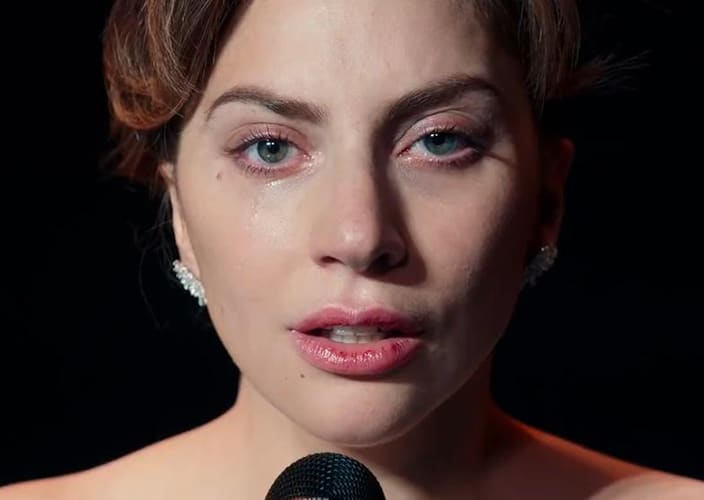
The emotional climax of the film comes soon after Jackson’s tragic suicide, at what seems to be a memorial concert in his honor. Just as “Shallow” was a fusion of Ally and Jackson’s song-writing visions – as Bobby puts it, how each artist “sees [the] twelve notes between any octave” – “I’ll Never Love Again” is also a product of their musical union. The chorus of the song was, we know from an earlier scene set at rehab, born on a page of Jackson’s notebook, and this scene tells us Ally completed that unfinished piece post-bereavement with some anguished verses of her own.
Backed by an orchestra and Jackson’s band (headed up by Lukas Nelson, real-life son of Willie), Ally exorcizes some of her grief in an impassioned Whitney-esque rendition that’s difficult to take your eyes off. The camera is equally spellbound, rarely blinking in its reverent gaze of Gaga (who seems born for this kind of melodrama), but towards the end of the scene, it does cut away mid-line to a flashback so that Jackson can finish the song. This scene, already so poignant, ends on an image that calls back to another shot – their wedding, and that tear – before cutting to black. While it certainly packs an emotional wallop, this musical moment features Ally at her least Ally-ishness, and so it feels a little like a stock scene as if you could repurpose it for literally any other vocally gifted, tragically bereft character in a melodrama.
5. Black Eyes
A Star is Born’s opening scene feels like footage straight out of Jackson Maine’s concert movie (minus, maybe, the censor-smashing shot of him popping pills). Shaky camerawork weaves us in and out of the action, following Cooper as he stumbles and stoops across the stage and gives us his best rock-star impression (a very convincing one, at that). The lights are in our eyes, the bass fills our ears, and you can almost smell the sweat; in short, “Black Eyes” sets up the film’s commitment to atmospheric authenticity. Cooper’s gruff vocals – glaringly conspicuous in that drag bar performance – are much more at home in this rough-and-ready setting, the industrial design of which feels in complete harmony with his own rugged looks. A note on this scene: it was actually shot between Jamey Johnson and Willie Nelson’s sets at Stagecoach (a country music festival), which perhaps explains why the average age of the audience members we see skews a little higher than you’d expect for the fanbase of an artist like Jackson.
4. Look What I Found
Up until this point, Ally has been an organically inclined musician, writing and performing on the fly. In this scene, we see her struggle to adapt to the formalities of the recording studio method, but while it’s thematically reminiscent of a similar scene in La La Land, Ally doesn’t share in Seb’s hipster snobbishness. She suffers no illusions about musical purity or selling out; even the elitist Jackson knows you need to embrace some artifice to make an album. What she does have are nerves, a problem Jackson solves with a little bit of ingenuity and a private jet casually on speed dial.
Once her piano has been flown into the studio, Ally is back in her element, making for a musical moment that feels like a candid segment from Gaga: Five Foot Two. (Ironically, A Star is Born comes closer to achieving the profile-boosting, legend-sealing effect on Lady Gaga that music documentaries like Five Foot Two shoot for.)
Like that “Shallow” moment in the parking lot, there is a real creative spark to this scene. It helps, too, that “Look What I Found” matches “Shallow” in catchiness: this is Ally at her toe-tapping, finger-snapping best.
3. La Vie en Rose
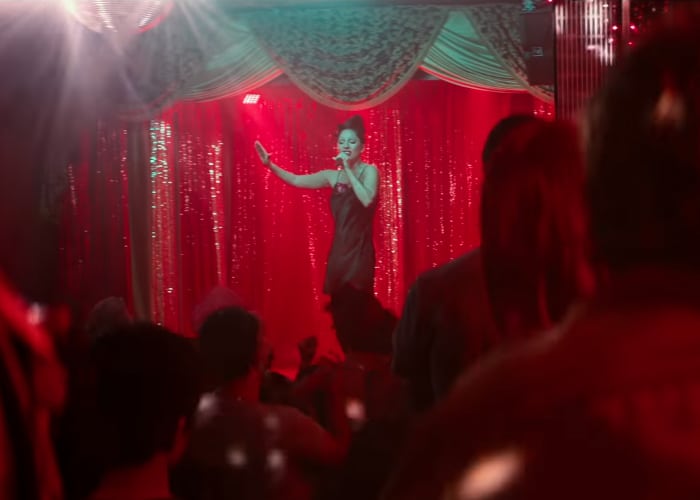
Ally and Jackson’s meet-cute takes place at drag bar Bleu Bleu, but this scene is less remarkable for its romantic implications than for what it shows us about Ally’s star potential. “Somewhere Over the Rainbow” taught us she could sing, yes, but the notes she hit there hardly feel in the same bracket as the “fabulous, French, liiive vocals” she serves here. She earns that standing ovation – and Jackson’s heart – with both her voice and a glorious sense of Gaga-esque theatricality, too: her natural charisma and utterly enthralling stage presence are what transform this campy Piaf impersonation into the powerhouse performance it is. Even with a mere five minutes separating this and the freewheeling magnetism of “Black Eyes”, “La Vie en Rose” leaves audiences in zero doubt about who the star of the movie really is.
2. Shallow
A Star is Born’s marketers banked on the singular power of this scene to sell the film, and it’s not hard to see why. Aside from being an absolute banger, “Shallow” is also designed for a duet, and as such, is the perfect vehicle to showcase the chemistry – not to mention vocal prowess – of its leads.
It’s a bravura performance to boot: after Jackson builds us up with a warmly-delivered first verse, Ally walks out into the spotlight to take her cue and administers her first lines with an innate confidence that betrays her star potential. When she transitions into the chorus, her astonishing vocals seem to shock even herself, as if she’s just discovered a latent superpower she never knew she had.
It’s an incredibly catchy song, yes, but this scene draws much of its energy from that astonishing primal wail Ally lets out in the middle of the song. It’s a goosebump-giving moment that launches Ally into viral stardom – and is one that will very likely earn Gaga a few Grammys, and, most certainly of all, next year’s Oscar for Best Original Song.
1. Always Remember Us This Way
Beginning with a medley of “Alibi” and “Maybe It’s Time”, this musical moment starts out as a montage that would probably find great success on Ally’s Instagram page under the caption “#TourLife”. There’s the obligatory tour bus footage of Ally putting pen to paper, as well as multiple onstage shots of her playing the piano and guitar to crowds of varying sizes, the largest of which is at Glastonbury. As with all of the movie’s live performances, the Glasto scenes were shot on location, in the four minutes leading up to Kris Kristofferson’s 2017 set (serendipitously for Cooper’s production, Kristofferson had starred in the 1976 remake of A Star is Born and, as Gerber told Billboard, made himself accommodating for the shooting of this iteration).
The montage ends at an unspecified concert venue where, in a callback to the speech Jackson gives Ally before they debut “Shallow”, he convinces her to “trust [him]” and close the show by debuting another of her songs. In contrast to “Shallow”, the country-tinged “Always Remember Us This Way” — which Ally pens herself at a rest-stop on the way to Arizona — is decisively a solo number, and so Jackson takes a backseat, barely appearing in the shots that follow.
As charismatic as Cooper is, you don’t miss his presence. You don’t get a chance to. What follows is transcendent, euphoric; Ally’s virtuoso performance of her love letter to Jackson authentically evokes that near-holy, hands-in-the-air feeling that every concert-goer hopes they’ll get to experience to make the price of their ticket worth it. Judging by their rapturous reaction, this rendition is so awe-inspiring it converts even the hardiest of country-rock fans into Ally stans, too, but it’s not just the in-film audience that she has such a profound effect on. The camera is equally entranced, and when it pulls out to show Ally’s face on the big screen, it’s difficult to remember this is a movie scene, not a standout excerpt from Gaga’s concert movie. Her performance blurs the line between fiction and reality here: it is genuinely difficult to believe this isn’t Joanne-era Gaga we’re watching. More than that incredible performance of “Shallow”, this is the moment that turns Ally into a star.
The post Every Musical Moment in ‘A Star is Born’ Ranked appeared first on Film School Rejects.


0 comments:
Post a Comment